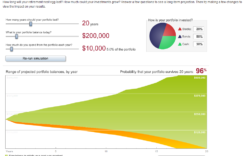Ever wondered if there was an alternative to stock piling money into a savings account ( An account that’s earning close to zero percent interest)? There are various alternatives to simply saving money under your mattress, and in a savings account.
A tax advantaged way to save money, and gain more on your investment is to contribute to a Roth IRA. What is a Roth IRA you ask?
What is a Roth IRA
A Roth IRA is an individual retirement plan that can be either an account or an annuity. ( An individual retirement annuity must be set up in the owner’s name, and the owner or beneficiaries will receive the payments or benefits).
Throughout this article I will refer to Roth IRA accounts. Roth IRA accounts can be opened through various brokerage accounts; for example, TD Ameritrade, Vanguard, Scott trade, and many more.
If you were to open a Roth IRA with a brokerage organization you will be able to hold investments and cash in the account for the purpose of saving for retirement hence the name Individual Retirement Arrangement ( often referred to as Individual Retirement Account).
Why invest in a Roth IRA
Short Answer: Roth IRA will allow you to invest your after tax dollars in an account, and withdrawals can be made up to the contributed amount without paying taxes.
Long Answer: Eligible distributions from a Roth IRA are tax free. For example, you may contribute 10,000 dollars to a Roth IRA account, and the account earns 7,000 dollars because you invested the money in investments with long track records of above average performance.
At the age of 59 ½ you can make eligible distributions tax free. However, at the age of 70 ½ you must take mandatory distributions or incur penalties.
On the other hand, if you withdraw the funds in the Roth IRA before the age of 59 ½ you will have to pay your current tax rate plus a 10% penalty. The reason for the stiff penalty is because this account is meant to be a savings account for retirement.
However, this penalty only refers to the gains from the investment and not the contributed amount. The IRS has exception to the 10% penalty for early withdraws and they are as follows:
- You are totally and permanently disabled.
- You are the beneficiary of a deceased IRA owner
- You use the distribution to buy, build, or rebuild a first home.
- You have unreimbursed medical expenses that are more than 10% (or 7.5% if you or your spouse was born before January 2, 1951) of your adjusted gross income (defined earlier) for the year.
- The distribution is a qualified reservist distribution.
IRA Comparison Chart
Supporting information for above chart:

To Roth or not to Roth that is the question
Roth IRA’s have an annual contribution limits that increase occasionally. At the time of writing this the limit is $5,500 or $6,500 if you are 50 years or older.
If you are single and earn less than $131,000 or $193,000 married filing jointly you are able to invest in a Roth IRA. You must ask yourself where do you foresee your taxable income tax-rate at retirement.
If in retirement you foresee yourself having a lower tax rate then during your working life time then a traditional IRA may need to be considered. However, that does not necessary mean you will pay less in taxes.
Actually with the lower tax rate you would need to pay taxes whereas with the Roth IRA you will not have to pay taxes as long as the distributions are eligible (Eligible when you have received 59 ½ and have held the account more than 5 years.
Another point to consider is tax free gain can make a huge difference. In the chart above the tax free Roth IRA is 25% more than the traditional IRA (401K) option. Also, do not forget about your personal budget allocations and the 10 to 15 percent you are investing for your future self/plans/family.
When considering an alternative to your traditional savings account consider a Roth IRA for the tax advantage and capitalize on the growth, and do not forget you can withdraw up to the amount you contributed without being taxed before the age of 59 ½.
Have any questions? Leave your questions in the comments below.
For more information visit the link below:
https://www.irs.com/roth-iras



